How to nail a sensational garden border design.
Mishmash of plants? Here’s the ‘how to’ guide.

Most of us have been guilty on occasion of popping to the garden centre and coming home with a mishmash of plants bought on impulse. We pick the showiest specimens, often not reading the care label, plant them wherever we have space, and hope for the best. Sometimes it works out ok, but often the plants ultimately prove to be unsuitable – the wrong size, colour, shape or species for the space. However with a bit of planning it is fairly easy to create a planting scheme that unifies our entire outdoor space. Here we look at not only the position of the plants and the styles that you could choose but also colour and texture.
Right Plant, right place
A successful planting scheme can make or break a garden. It is important to get the right plant in the right place and make sure they all have a relationship with each other. Whether we are freshening up an existing scheme or creating a new border, there are many factors which need to be considered. If a plant likes sun there is no point putting it in a shady border. It will not thrive. Look as well at the expected maximum height and width of the plant at maturity. This will give you an idea of how much space it will need. Most plants come with a care label, but at the very least they should have a name. Look it up online and follow the instructions.
Some planting terms you may encounter:
- Annual – A plant that completes its entire life cycle (growth, reproduction, death) in one season.
- Biennial – A plant that completes its entire life cycle in two years, growing in the first year and reproducing and dying in the second.
- Bulb – An underground storage organ with fleshy scale leaves from which the plant flowers and grows before becoming dormant.
- Deciduous – A plant that sheds its leaves each year.
- Evergreen – A plant that retains its foliage throughout the year.
- Hardy perennial – A plant that lives for more than two years and is fully hardy.
- Herbaceous plant – A non-woody perennial plant, often dying back in the winter and becoming dormant by means of underground rootstocks or a woody base. Growth resumes in the spring.
- Semi-evergreen – A plant that retains most or some of its foliage throughout the year.
- Shrub – Shrubs are woody plants usually with multiple stems arising from or near their bases. Shrubs will not develop a bare trunk like a tree, however, some large shrubs can be pruned into tree-form by removing all but one straight main stem.
- Specimen Plant – Normally a tree or shrub grown in a prominent position where it can be viewed from different angles.
- Standard – A tree or shrub that has been trained to a certain height with a long bare stem and foliage at the top.
- Topiary – A shrub or tree which has been carefully pruned and trained to give it a unique shape unlike the shape it would form if left to grow naturally.
Planting Styles
I am not wedded to any particular planting style. I have my favourite plants which can often work across two or three different styles. However I do think it is a good idea to try and work to a theme, however loosely, to achieve some unity and flow through your beds and border. Below are some examples of different types of planting styles. They are by no means exclusive of each other and many plants can work across several styles:
Cottage – Characterised by free-flowing, colourful, seemingly unplanned landscapes, cottage gardens use every bit of growing space. Plants in a variety of shapes, sizes and textures spill exuberantly onto paths, climb up arbors, and burst out of planters. High maintenance.
Tropical – A lush planting style, achieved through dense plantings of appropriate evergreen and flowering plants. Has a distinct appearance with spiky palms, broad leaves and brightly coloured flowers.
Needs lots of water, sunlight and attention to survive.
Contemporary – Focussed on simple planting, often with a mainly green colour palette. Planted in straight lines or ordered in groups of odd numbers, preferably threes or fives. If you want to do a mass planting of one type of plant try planting them in a grid pattern.
Japanese – Serene and relaxing featuring evergreens in a variety of shapes, sizes and textures.
Mediterranean – Focusses on texture and colour, usually with blue/green foliage and purple, red or yellow blooms. Strong structure to create definition. Evergreen trees and hedges are popular for this purpose. Drought tolerant and cold hardy. Fairly low maintenance.
Architectural – Similar to Tropical. Strong shapes, big leaves. Contemporary. Can get very big. Reasonably low maintenance.
Wildlife – Can be worked into many other schemes. Socially responsible, nectar rich, berry producing. Avoid use of chemicals when gardening. Low maintenance if you are content with a chaotic space that does its own thing.
Prairie – Swathes of herbaceous perennials and grasses. Minimalist and naturalistic. Better in larger spaces. Doesn’t look great in winter.
Plant layout
Plant shapes are the backbone of a design. Look at most borders and you’ll notice several distinct types of plant shapes. A good rule of thumb is ‘tallest at the back, shortest at the front’, and the same applies to a bed you can walk around: tallest in the centre, smallest at the edges.
The trick is to start small, choosing just three plants that look good together. If you want a basic blueprint, go for one upright plant, a bushy one and a short spreader, so that when they’re in a group the outline is roughly triangular.
When you’re making a whole border or an entire small garden, make up lots of trios and then join them together. There’s an easy way to make the planting scheme “stick together”: either repeat the same plant in several of your groups, so it pops up several times throughout the arrangement, or else have one ground cover plant underlining the whole lot, which gives a great sense of continuity.
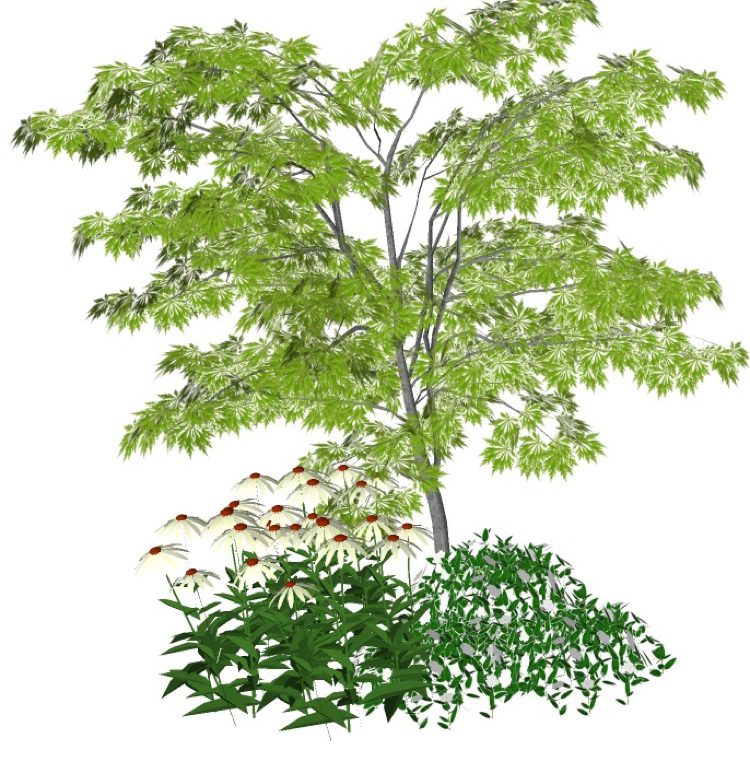
Tallest at the back, smallest at the front
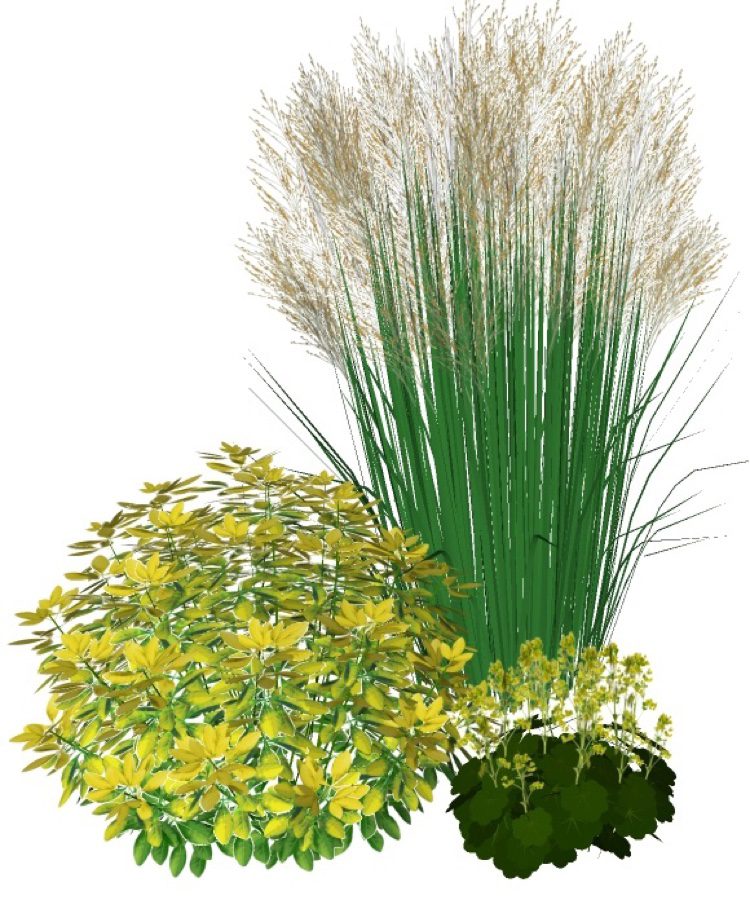
An upright, a bush and a spreader.
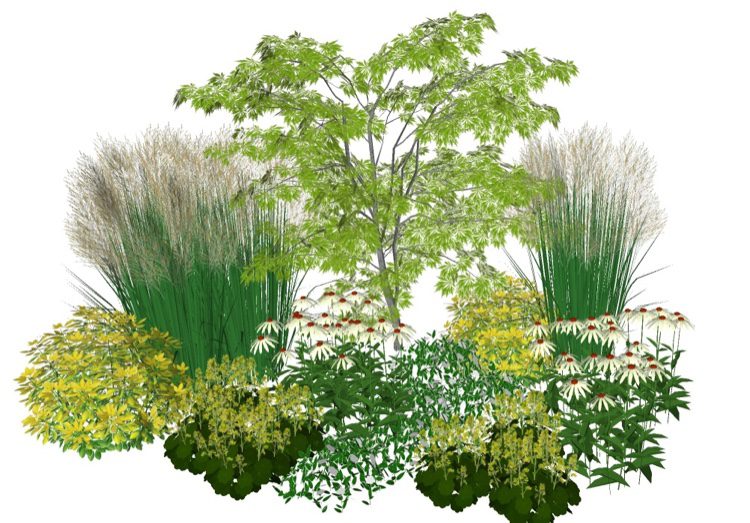
Once you have you trio, combine and repeat.
Texture
Texture can be seen as well as touched. It is not always something we consciously register, although we do recognise it instinctively. When we see textures in the garden we compare them and the differences often have an aesthetic impact. It is important not to make your planting one big blob of textures and colour – a little structured variety will create a more appealing scheme.
The shape and texture of the plants you choose will have an effect on the way your garden is perceived. Bold textured plants can seem closer than they actually are, while fine textured plants seem further away. To make a small bed seem deeper, plant coarser (bolder) textured plants towards the front, medium textured plants in the middle and fine textured plants at the back. If you want a large area to appear smaller and more intimate, reverse those suggestions.
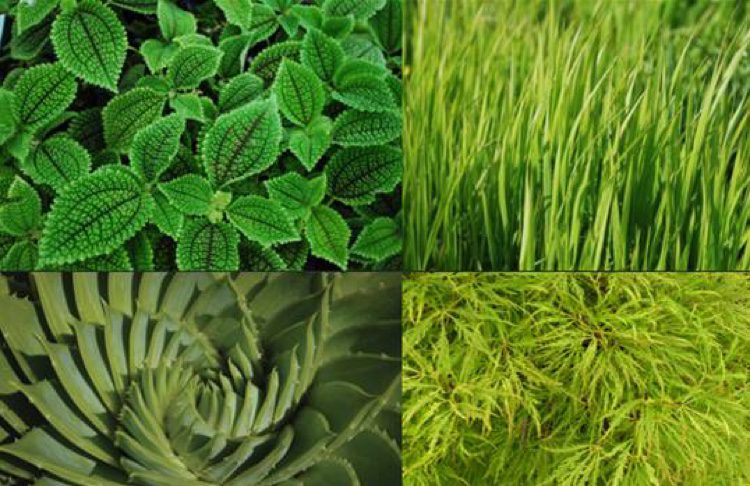
Place different textures together for added drama
Colour
Never underestimate the importance of colour in the garden. The colour scheme unites the space. A planting scheme that changes colour with the seasons will give the garden an everchanging appearance. Colour can steer the design but to do so the colour scheme needs to be set out in a balanced way. The easiest way to achieve a balanced colour scheme is with reference to a colour wheel and colour theory. Many of the most successful schemes I have done have been a simple green and white scheme. It calms the space beautifully.
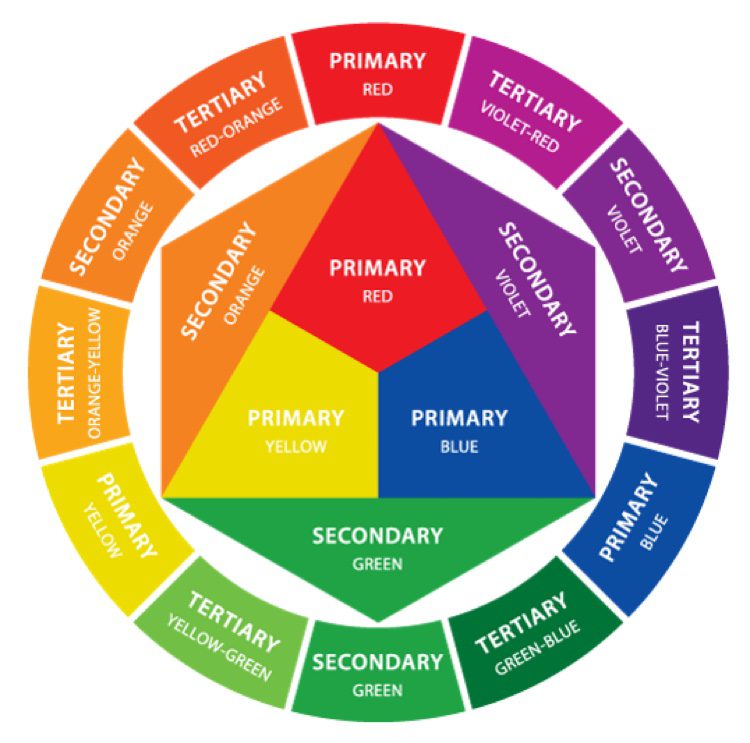
Use the theory of colour to create unity in the planting
Planning the perfect border.
If you would like to learn more about garden border design, we offer a short masterclass called ‘planning the perfect border‘.
